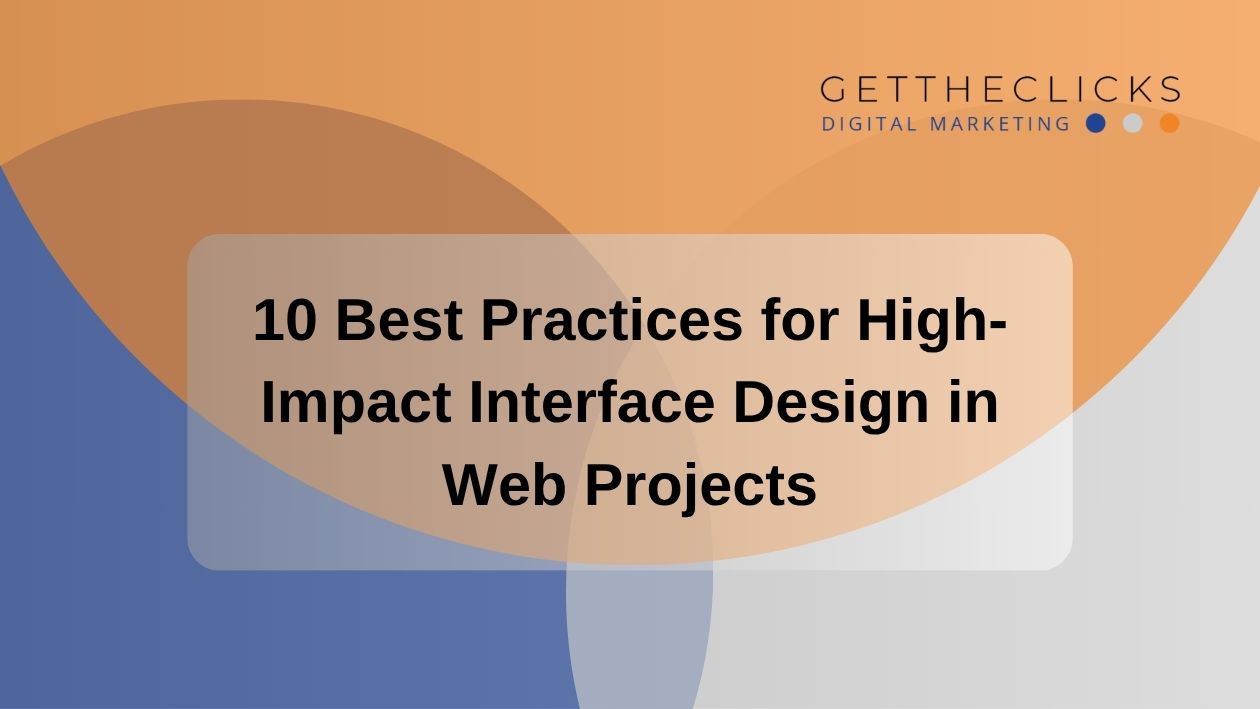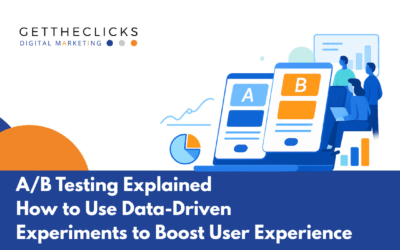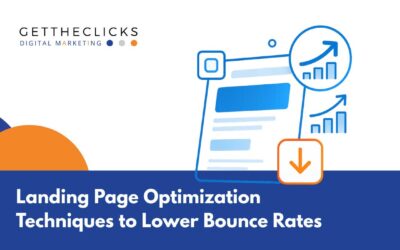A truly high‑impact web interface is more than just attractive visual design; it’s about creating digital experiences that are intuitive, engaging, and aligned with your business goals. Effective interfaces guide users naturally, remove friction, and drive meaningful action. When you prioritize user behavior alongside strategic objectives, your user interface design becomes a powerful asset for usability testing, performance, and conversions.
Hiring a reputable website development company simplifies the process. In this guide, you’ll explore ten proven best practices for high-impact interface design in web projects, resulting in scalable, smart, and user‑focused web interface design decisions that lead to lasting impact.
1.Create a User-Centered Design: The Foundation of High-Impact Interfaces
To create interfaces that resonate, you must start by understanding your target audience. This means diving deep into who they are, how they behave, and what challenges they face. User interface and UX design put real people at the center of every decision you make, from layout to features to functionality.
Create user personas and journey maps; these are essential tools here. They let you visualize user needs, goals, and frustrations across touchpoints. When you base your design on this insight, your UI design process becomes intuitive, functional, and aligned with user expectations, leading to better engagement and fewer support issues.
2.Use Visual Hierarchy Techniques to Boost Interface Clarity and Flow
A clear visual hierarchy helps users quickly understand what’s important and where to go next. It’s about guiding their eyes through ui elements using cues like typography, size, color, and placement. Start with clear headings and subheadings. Use larger font sizes for primary actions, maintain consistency, and apply contrast to distinguish content blocks.
When visual hierarchy is used effectively, users don’t have to think—they simply follow the flow. This improves usability, reduces bounce rates, and ensures your web interface communicates clearly and purposefully.
3.Design Accessible Web Interfaces That Everyone Can Use
An accessible design means ensuring that all users, including those with disabilities, can navigate and interact with your user interface. This isn’t just about compliance; it’s about inclusivity and expanding your reach. Adopt web content accessibility guidelines and best practices, such as ensuring color contrast for readability, providing keyboard navigation, and using semantic HTML.
Screen reader compatibility and meaningful alt text for images are also critical best practices for improving interfaces for Ui/UX websites. These minor adjustments reduce user frustration, enhance usability, and allow everyone to benefit from your interface design.
4.Build Scalable Interfaces with Component-Based Design Systems
Scalability becomes critical as projects grow. Component-based design systems allow you to build with reusable components—buttons, forms, navigation bars—that maintain consistency across your platform. This approach not only speeds up development but also enforces visual and external consistency.
Teams of UI and UX designers can collaborate more efficiently when working from a shared design system, and updates become seamless across all pages. A well-maintained design system evolves with your product, making your web interface design flexible and future-ready.
At Get The Clicks, we build scalable interfaces using component-based design systems that help us deliver faster, more consistent, and future-ready web solutions for growing digital projects.
5.Improve User Experience with Microinteractions and Feedback
Microinteractions are small, functional animations that elevate a user’s experience. Whether a heart icon animating when liked or a loading spinner confirming an action, these interactive elements build responsiveness and trust. They reduce uncertainty by signaling that the interface is reacting to user actions.
Even subtle interactive elements, like hover effects, can enhance usability. When designed with intent, micro interactions serve as user testing touchpoints, guide user behavior, prevent errors, and create a more delightful and intuitive interface.
6.Create Visually Appealing Yet Functional Interfaces
A visually appealing interface draws users in, but true success lies in balancing beauty with UI design principles. Clean design doesn’t mean sacrificing aesthetics; it means each element serves a purpose and contributes to a unified whole. Limit visual clutter and group-related elements, and use whitespace effectively.
Choose a consistent color palette, incorporate branding elements, and ensure UI components are clearly recognizable. Avoid unnecessary elements and trends that don’t enhance function. The result is an uncluttered interface that is user-friendly, professional, and performs effortlessly across multiple devices.
Get The Clicks crafts visually appealing interfaces that strike the perfect balance between aesthetics and usability, ensuring every design choice reinforces clarity, brand identity, and seamless performance across all devices.
7.Improve Navigation and Information Architecture in Web Design
Navigation should feel natural and predictable. Users should never struggle to find what they’re looking for—if they do, they’re likely to leave. That’s why navigation, information architecture, and UI design for web projects are essential. Use familiar structures like top menus, sidebars, and breadcrumbs.
Group related elements and name categories clearly, and support exploration with filters or search bars. A logical site structure helps users stay on the same page, increasing time on site and satisfaction. Proper navigation also reduces cognitive load and aligns with established ui patterns.
8.Design for Speed and Device Adaptability
Today’s users access websites from mobile devices, tablets, and desktops; they expect performance to be seamless across multiple devices. A responsive design adjusts layout and functionality for any screen size. Equally important is speed. Optimize images, minify code, and prioritize above-the-fold content. Here’s more on how to use image compression to increase website loading times.
Fast-loading pages reduce bounce rates, enhance usability, and are favored by search engines. When you build for speed and adaptability, your user interface design becomes more competitive, effective, and suited for the modern digital landscape.
9.Use UX Writing Strategies to Improve Clarity in Your Web Interfaces
The words you choose in your interface matter just as much as the visuals. Effective UX writing improves user comprehension, reduces errors, and builds trust with your audience. Use plain language and focus on action-oriented text—clear labels for buttons, helpful error messages, and concise tooltips.
Replace vague terms like “submit” with more helpful phrases like “send message” or “create account.” Maintain a consistent tone across all ui design for web projects, reflecting your brand and ensuring the interface remains intuitive. Clarity in writing directly contributes to a positive user experience.
At Get The Clicks, we use strategic UX writing to make every word count—crafting clear, purposeful interface copy that enhances usability, reflects your brand voice, and keeps users confidently moving through your web experience.
10.Perform Continuous Interface Improvement Through Testing and Iteration
Interfaces are never truly finished. As user needs evolve, so should your design. Regular user, usability, and A/B testing ensure your interface stays relevant, efficient, and user-friendly. Use interactive prototypes created with prototyping tools to experiment and gather user feedback. Track metrics like clicks, session duration, and usability issues, and analyze user behavior with heatmaps or session recordings.
What works today might not work tomorrow, so treat improvement as an ongoing ui design process. By iterating based on user research and real data, your interface design becomes sharper, smarter, and more aligned with evolving user expectations, user interface best practices, and business goals.
Ready to Elevate Your Interface Design? Partner with Get the Clicks
Maximize the impact of your web projects with interface strategies that drive real results. At Get the Clicks, we turn design best practices into business growth. Contact us and let’s build interfaces your users and bottom line will love.





